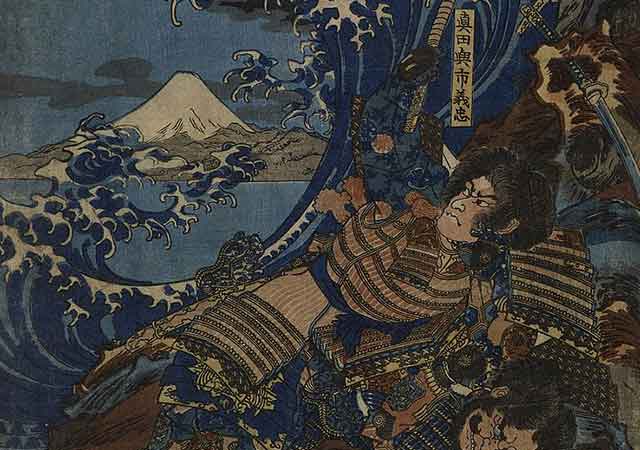
The Battle of Ishibashiyama occurred during the Heian Period, pitting two rival clans, the Minamoto and the Taira, against each other. It took place at Ishibashiyama, located in the mountains of Hakone near Odawara in Kanagawa Prefecture. Minamoto no Yoritomo led a small force of 300 troops, while the Taira, under the command of Oba Saburo Kagechika, boasted over 3,000 warriors.
Minamoto no Yoritomo had been exiled by Taira no Kiyomori, the leader of the Taira clan, after the Heiji Rebellion in 1160. The Minamoto, who had lost the rebellion, either faced execution or exile. Yoritomo's life was spared, and in 1179, he married into the Hojo clan, who provided financial support for his bid to reclaim leadership of the noble Minamoto clan and overthrow the Taira.
A year later, the Minamoto and Taira clashed once again. In May of 1180, Imperial Prince Mochihito called upon the Minamoto clan to assist him in reclaiming the Imperial throne. Although the Minamoto attempted to rise, they could only gather 300 men. Unfavorable weather conditions had flooded the Sakawa River near Kamakura, blocking reinforcements from the Miura clan, a Minamoto branch, from reaching Yoritomo at Ishibashiyama. The Taira, aware of the Minamoto uprising and their intended route through the Hakone Pass, sent a force to intercept them. Under cover of darkness, the Taira forces struck. With 3,000 men launching a frontal assault and another 300 under Taira allied Ito Sukechika attacking from the rear, the Minamoto were caught in a deadly pincer.
Despite facing overwhelming odds of more than ten to one, the Minamoto fought valiantly but were eventually overwhelmed, resulting in heavy casualties. As they tactically retreated, many loyal to Yoritomo lost their lives until only Yoritomo and a single vassal remained standing. They sought refuge inside a hollow tree trunk and remained hidden until discovered by an enemy unit.
Fortunately, it seems that some enemy units sympathized with the Minamoto's cause and assisted in their escape from the battlefield to the coast. Yoritomo and his vassal fled by ship to Awa Province on the Boso Peninsula (now Chiba Prefecture). Two months later, Taira commander Oba Kagechika approached Yoritomo, offering his submission and services, only to be arrested and executed.
Over the following years, Yoritomo steadily built his power base. In 1185, he witnessed the Taira clan's decisive defeat at the naval Battle of Dan-no-Ura, granting him the freedom to establish a government in Kamakura in 1192. Invested as Shogun, he ruled until his accidental death at the age of 51 on February 9, 1199, after falling from his horse the previous day.
See also
-
The Siege of Hara Castle

The Shimabara Rebellion of 1637–1638, which culminated in the siege of Hara Castle, was the last major uprising of the Edo period and had serious political consequences.
-
Battle of Tennoji

The confrontation between Tokugawa Ieyasu and Toyotomi Hideyori during the “Osaka Winter Campaign” ended with the signing of a peace treaty. On January 22, 1615, the day after the treaty was signed, Ieyasu pretended to disband his army. In reality, this meant that the Shimazu forces withdrew to the nearest port. On the same day, almost the entire Tokugawa army began filling in the outer moat.
-
Siege of Shuri Castle

The Ryukyu Kingdom was established in 1429 on Okinawa, the largest island of the Ryukyu (Nansei) archipelago, as a result of the military unification of three rival kingdoms. In the following years, the state's control spread to all the islands of the archipelago.
-
The Siege of Fushimi Castle
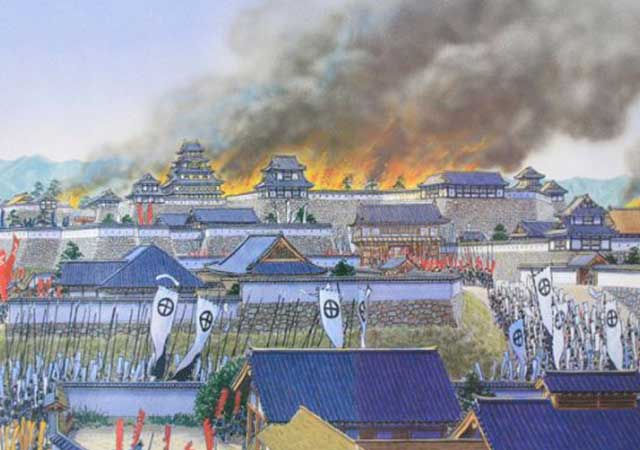
Fushimi can perhaps be considered one of the most “unfortunate” castles of the Sengoku Jidai period. The original castle was built by Toyotomi Hideyoshi in the southeast of Kyoto in 1594 as his residence in the imperial city.
-
The Siege of Otsu Castle
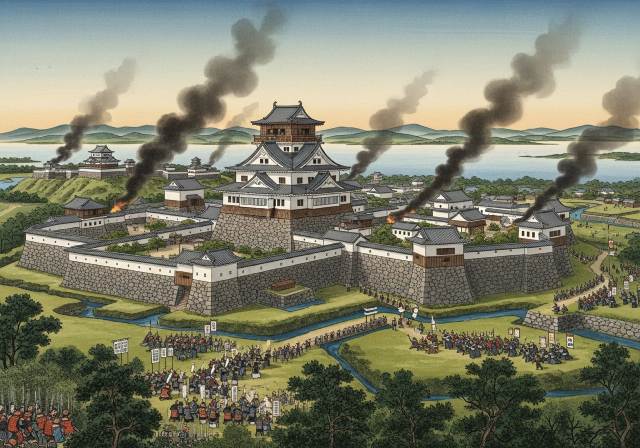
The siege of Otsu Castle was part of the Sekigahara campaign, during which the so-called Eastern Coalition, led by Tokugawa Ieyasu, fought against the Western Coalition, led by Ishida Mitsunari. Otsu Castle was built in 1586 by order of Toyotomi Hideyoshi near the capital Kyoto, on the site of the dismantled Sakamoto Castle. It belonged to the type of “water castles” — mizujō — as one side of it faced Japan's largest lake, Lake Biwa, and it was surrounded by a system of moats filled with lake water, which made the fortress resemble an island.
-
The Siege of Shiroishi Castle
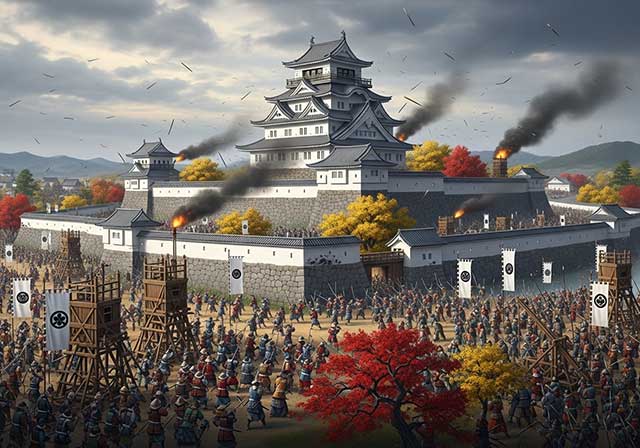
The siege of Shiroishi Castle was part of the Sekigahara campaign and took place several months before the decisive battle of Sekigahara. The daimyo of Aizu Province, Uesugi Kagekatsu, posed a serious threat to Tokugawa Ieyasu's plans to defeat the Western Coalition, and Ieyasu decided to curb his actions with the help of his northern vassals. To this end, he ordered Date Masamune to invade the province of Aizu and capture Shiroishi Castle.
-
The Second Siege of Jinju Castle
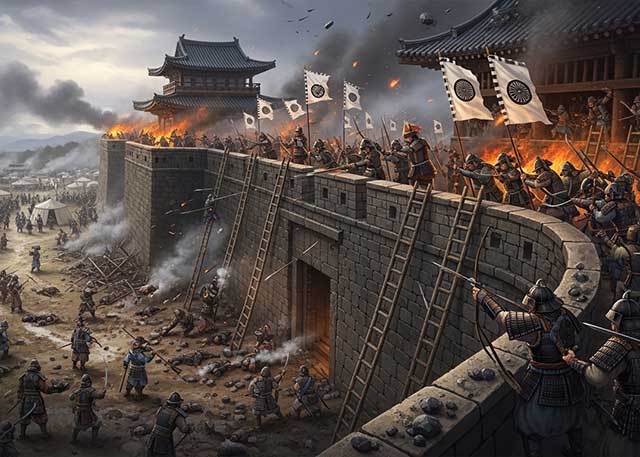
During the two Korean campaigns of the 16th century, the Japanese repeatedly had to capture enemy fortresses and defend occupied or constructed fortifications from the combined Korean and Chinese forces. Among all the operations of that time, the second siege of Jinju Castle is considered the most interesting from the point of view of siege warfare.
-
The Siege of Takamatsu Castle
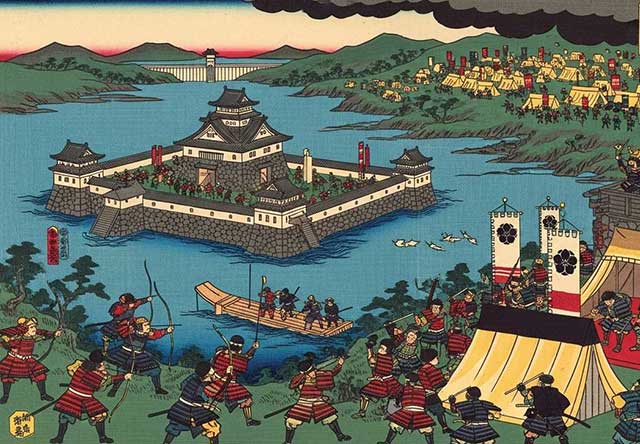
The siege of Takamatsu Castle in Bitchu Province is considered the first mizuzeme, or “water siege,” in Japanese history. Until then, such an original tactic had never been used.

